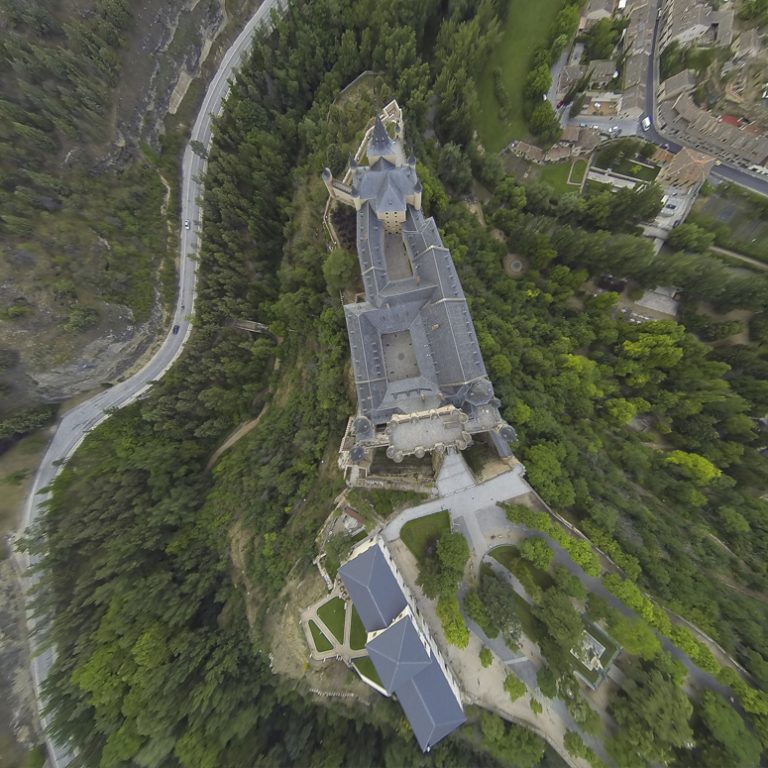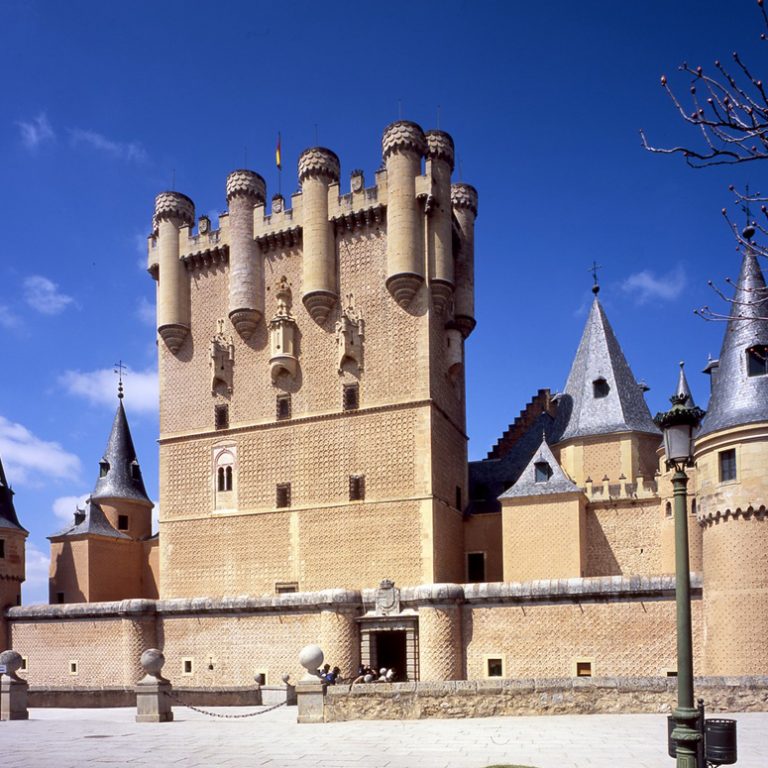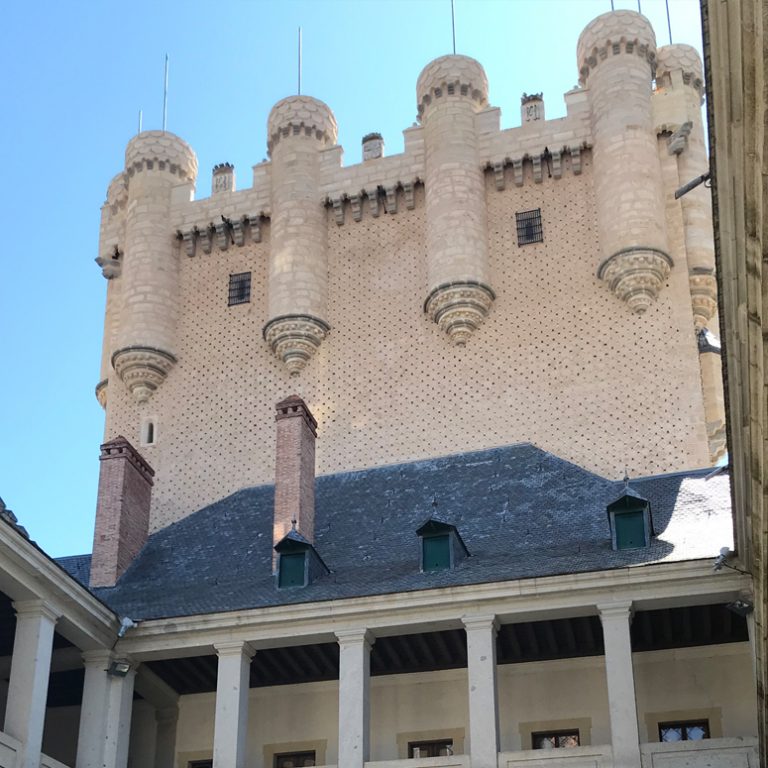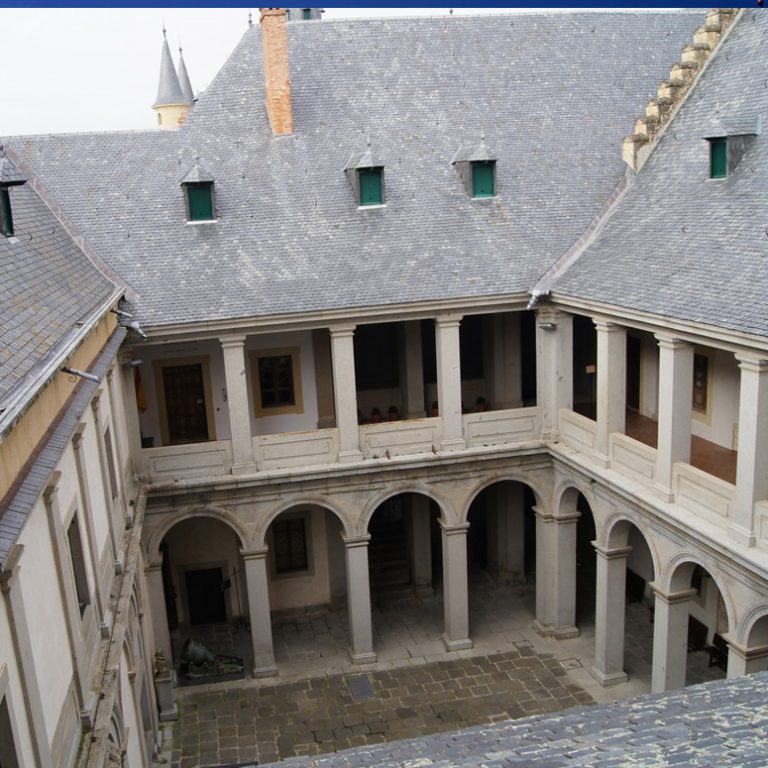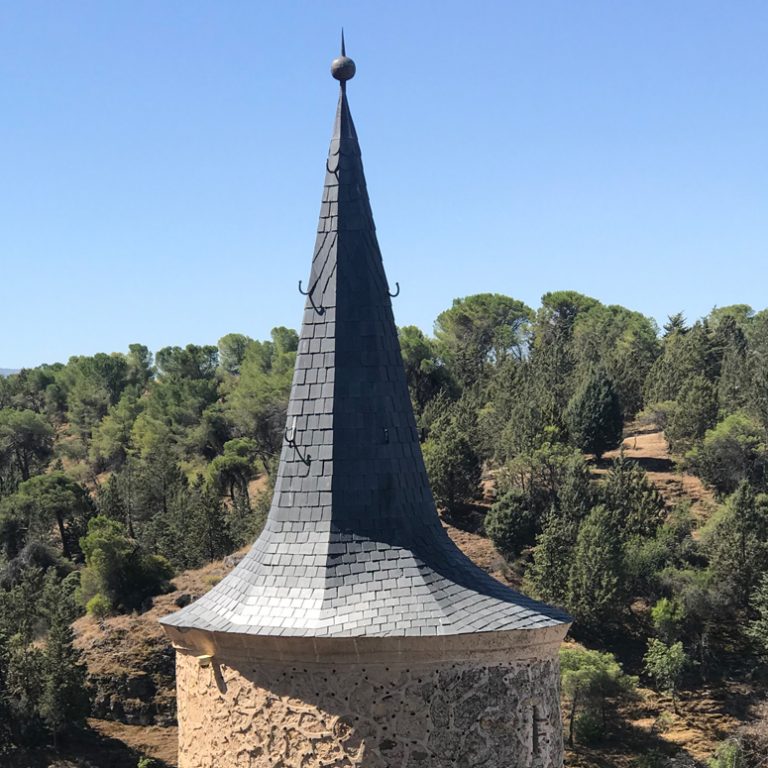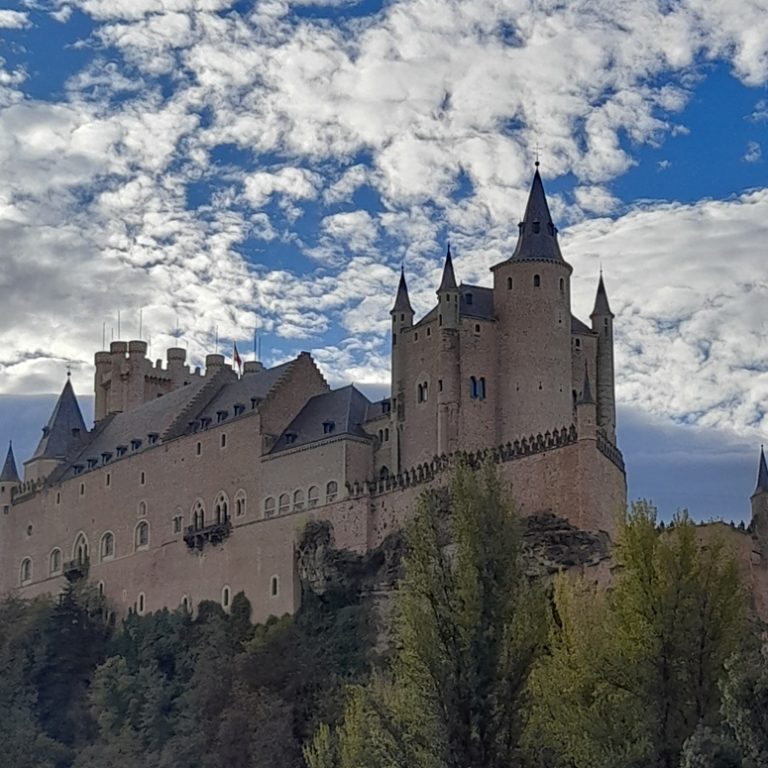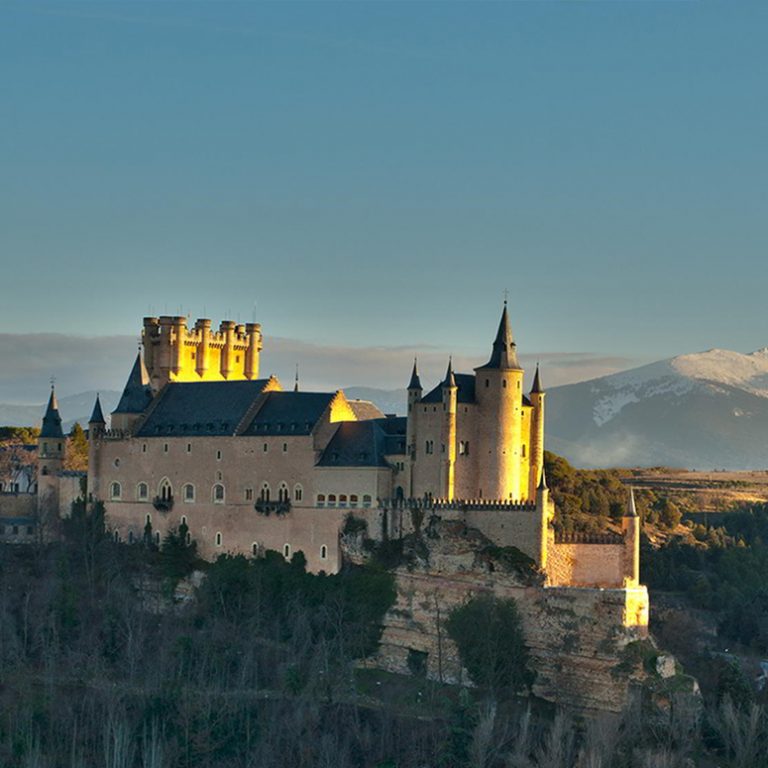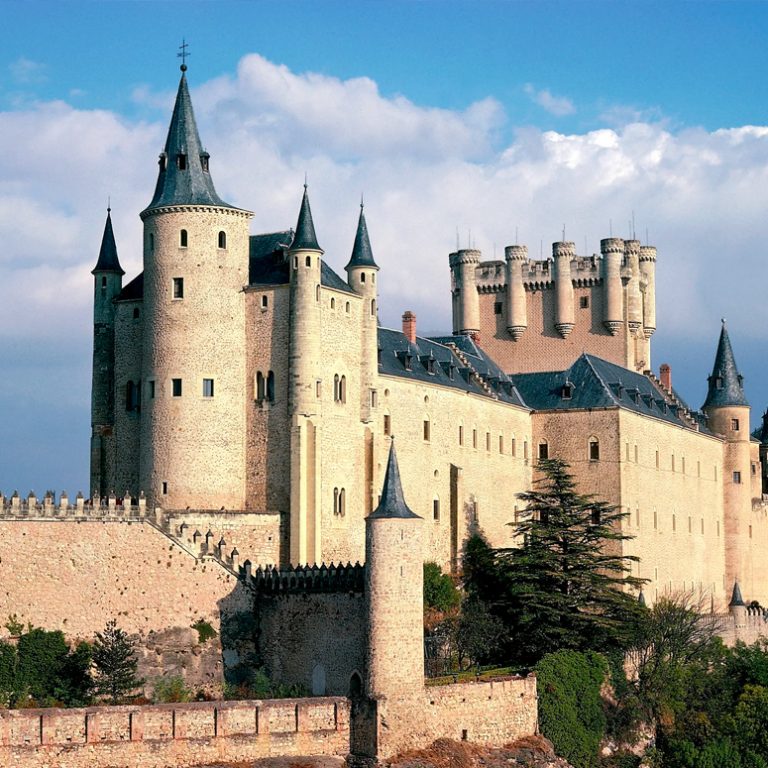
The Alcazar of Segovia is one of Spain's most visited monuments, a castle with a distinctive silhouette in an excellent location overlooking the Eresma River, symbolizing the old city of Segovia (a UNESCO World Heritage Site since 1985). Its layout is highly irregular and adapts to the hill on which it stands. It is known for its distinctive architecture and its use of slate in the roofs and towers. Its existence is documented as far back as the early 12th century. Throughout the Middle Ages, the Alcazar became one of the favorite residences of the Castilian kings. The ascension to the throne of the Trastámara monarchy brought new impetus in architectural, political, and symbolic realms. With this monarchy, it became a true palace, from which Isabella the Catholic emerged to be proclaimed queen of Castille in December 1474 in the main square of Segovia.
Philip II celebrated his wedding to Ana of Austria, his fourth wife, here. He also carried out significant reforms in the palace, such as replacing curved ceramic roofs with pointed slate spires. This slate, extracted from nearby quarries in Bernardos, gave it the appearance of a Central European castle that sets it apart from the rest of the Castilian fortresses. Slate, being a more durable and resistant material, made it a practical and functional choice to protect the building from the elements. The slate, with its dark color and smooth, shiny appearance, contrasts impressively with the lighter stone that forms the walls of the Alcazar.
After the Court moved to Madrid, it ceased to be a royal residence and became a prison for more than two centuries. In 1764, King Carlos III founded the Royal Artillery College until a terrible fire destroyed the roofs and damaged the structure in March 1862. Once the restoration was completed in 1896, Alfonso XIII (represented by Maria Cristina) handed it over to the Ministry of War for the Artillery Corps. In 1898, the General Military Archive was installed in the upper part.
As has been done over the centuries, Naturpiedra has carried out several restoration interventions of the roofs with the same original material, Phyllite from Bernardos, in our contemporary era. It is worth noting its full adaptation to the historical building, as an appropriate material for restoration work. This historical significance is complemented by the recommendations of major experts from international organizations responsible for the preservation of the world's historical and cultural heritage (Athens Charter 1933 and Venice Charter 1964). Partly because Bernardos slate is a perfectly identifiable product in its origin, having been used for almost 500 years in emblematic works of Spanish architectural heritage, it was declared a World Heritage Stone by the International Union of Geological Sciences at the end of 2022.
